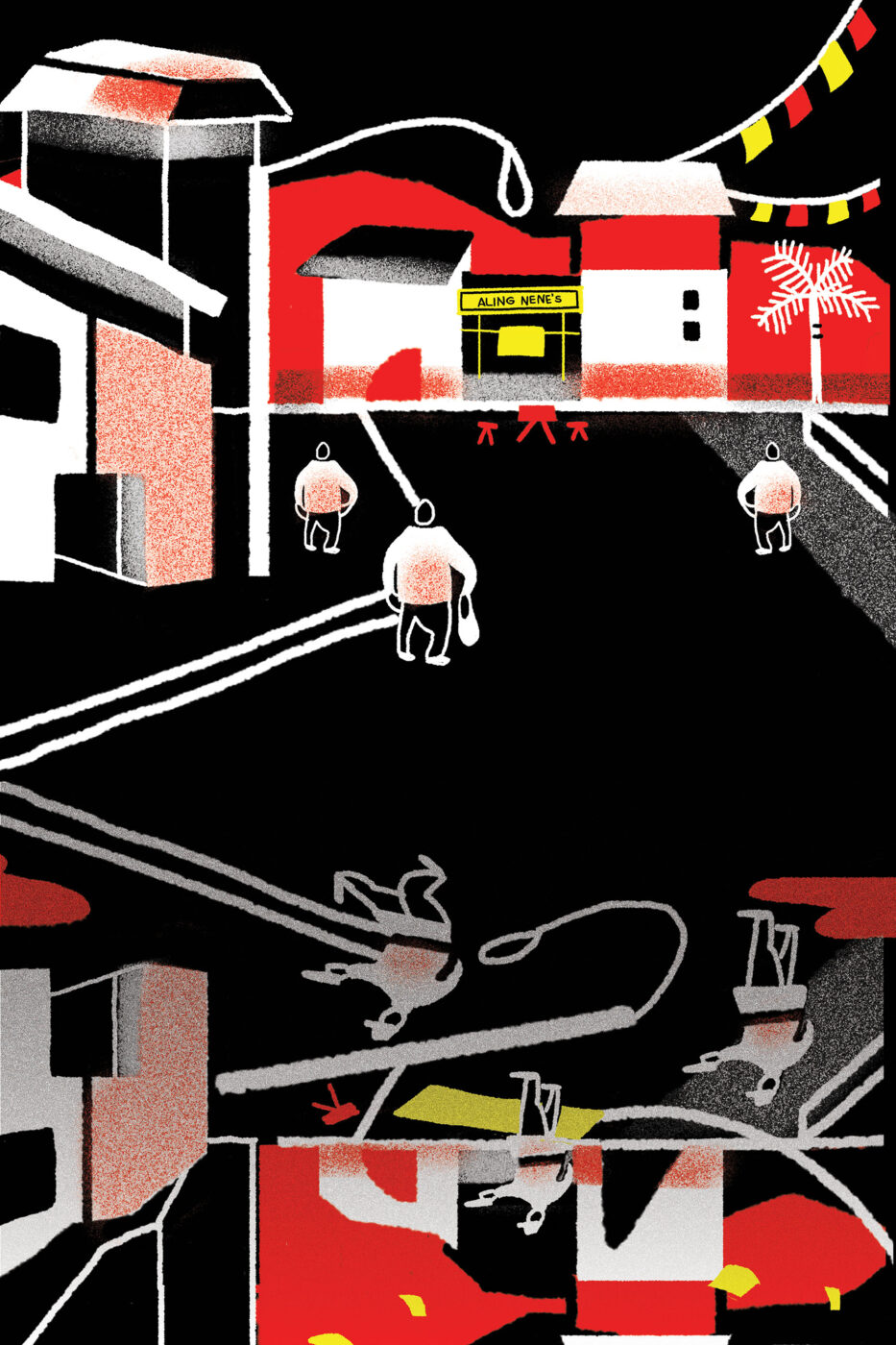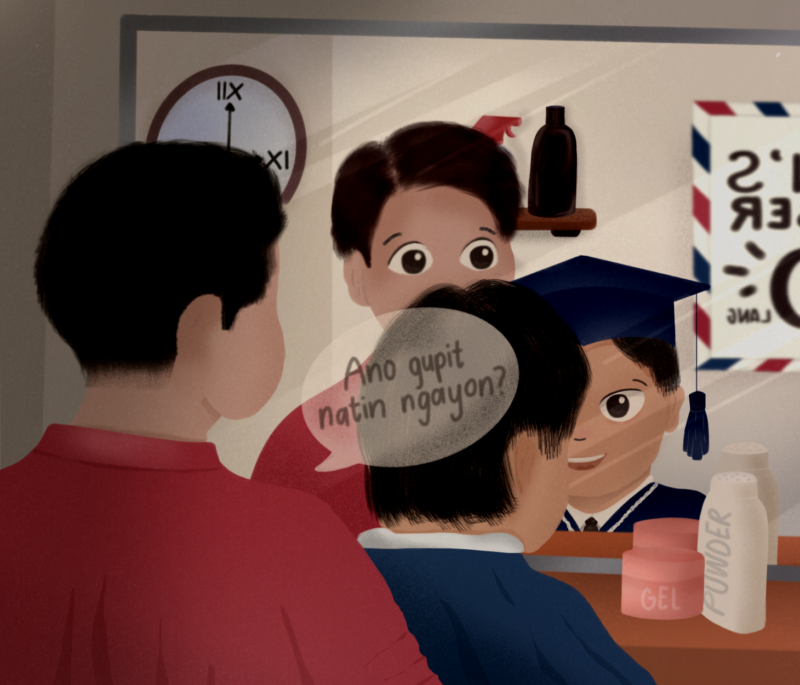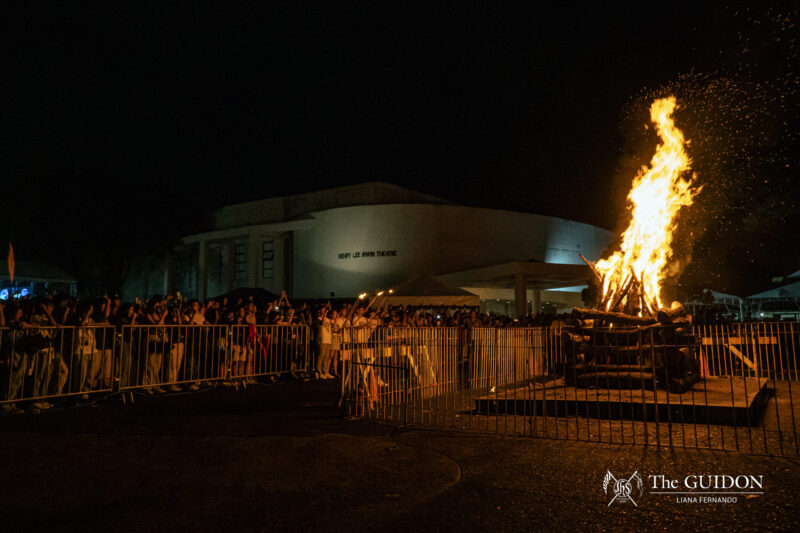On January 26, 1970, National Union of Students of the Philippines president Edgar Jopson and University of the Philippines Student Council chairman Fernando Barican organized a demonstration that coincided with the State of the Nation Address of the recently reelected president Ferdinand Marcos. This was to protest the increasing graft and corruption within the administration.
Violence marred the rally as protesters lobbed placards, sticks, and a crocodile paper mâché sculptures towards Marcos and First Lady Imelda Marcos as they were about to board the presidential limousine. Police present at the demonstration responded by indiscriminately bludgeoning the student protesters with rattan truncheons. A total of 300 protestors and 72 police officers were injured.
This demonstration was but one of many that marked the so-called “First Quarter Storm,” a period of civil unrest and student activism from January to March 1970. Protesters would frequently clash with the police, resulting in four deaths and hundreds of activists injured.
Marcos would then use this civil unrest, along with the alleged ambush attempt on then-Defense Minister Juan Ponce Enrile and the Communist and Muslim separatist threats as scapegoats, to issue Proclamation 1081 which the entire Philippines under Martial Law.
“Sa ikauunlad ng bayan, disiplina ang kailangan (For the nation’s progress, discipline is needed)” was a popular propaganda slogan then, emphasizing the need for “discipline” by implementing an authoritarian regime in which a “benevolent strongman” will lead the country through this chaotic period.
Many apologists of the regime laud this time as a period of unprecedented peace and security. They claim that the people followed the rule of law, that crime was at an all-time low, and that the Communist insurgency was held at bay.
Even today, one could see the public’s fervent desire for a “strongman” to discipline the nation through the popular support for current president Rodrigo Duterte who at one point described himself as a “dictator.” Despite the controversial, unorthodox, and even “bloody” means with which the president aims to “straighten up” the country, some still continue to justify his stance on crime and punishment.
However, the desire of authoritarian leadership is but an effect of a deeper problem that has plagued the nation’s social memory since the fall of Marcos: the inability to recognize the atrocities of the regime and reach a consensus regarding one of the most tumultuous chapters of Philippine history.
Shaping public sentiment
According to History Department instructor Brian Paul Giron, the public perception on a historical event stems from the idea of perspective. Giron noticed that many Filipinos tend to believe perspectives that are shaped by popular sentiment.
“Frustrations with the current system sometimes makes people look back and think of a better time. That is a syndrome [which] happens quite easily for many people,” said Giron.
Despite the initial public resentment, the Marcos regime was able to assert its authoritarian rule, according to Carmencita D. Aguilar’s 1988 journal article titled “The Marcos Rule and its Dynamics of Political Control,” published in the Indian Journal of Asian Affairs. In her article, Aguilar explained that the shift in perspective could be largely attributed by the dominant culture and prevailing attitudes of the people toward the promise of a better economy.
According to Aguilar, the Marcos administration operated on the premise that economic development would only thrive in an authoritarian setting.
“When President Marcos promised to bring about the economic development of the country, many sectors thought, that they would give him a chance to prove himself, if such would be for the benefit of the country,” wrote Aguilar, citing the role of cronies and institutions as an important factor.
A development strategy was executed to enhance the infrastructure for agro-industrial productivity and to create projects that address sectoral issues such as education, family planning, and employment.
“The major reason for the people’s support of President Marcos’ authoritarian government was in an anticipation of fulfilment of programmes which appeared beneficial to the country,” she wrote.
The abundance of infrastructure was one of the celebrated legacies of the Marcos regime. In 20 years, the administration was able to build enduring landmarks such as the Philippine Heart Center, the Cultural Center of the Philippines, the Philippine Rice Research Institute in Los Baños and the San Juanico Bridge connecting the provinces of Samar and Leyte.
Gerardo Sicat, Marcos’ first director general of the National Economic and Development Authority said that among all presidents, Marcos takes credit for having the “most extensive infrastructure project” in the country. He was notably responsible for the construction of the Pan-Philippine Highway, a national highway connecting the island groups of Luzon, Visayas, and Mindanao.
“Nevertheless, his unparalleled achievements and contributions to the country, especially in infrastructure development, albeit persistently shunned from the spotlight, will remain as his lasting legacy. For as long as they stand, Marcos lives,” Sicat said.
Although the strategy seems to remedy the country’s crises, research data have shown that the macroeconomic performance of the country worsened. Due to financial mismanagement, projects and infrastructures were excessively funded by exorbitant debt, which amounted to USD 24.4 billion by 1982, a significant portion of which went to corruption. Fast forward to the present, the Marcos family has yet to return their ill-gotten wealth, which is worth USD 10 billion in total.
Aguilar concluded that the Marcos regime failed to meet the expectations of the people. Instead of economic self-sufficiency, access to social services, and public safety, authoritarian rule did not save the government from widespread poverty, emergence of insurgent groups, massive injustices, and corruption.
Busting the myths
Giron warned that there is the danger of failing to recognize other aspects of the era and reducing the conversation of history into a one-sided narrative.
“Human rights are really a big part of the Martial Law regime. But sometimes we focus on human rights to the detriment or the exclusion of the economic scene. And it gives people the perspective that maybe the economy wasn’t as bad [as it seems to be],” he explained.
He also observed that the younger generation has the propensity to develop misguided assumptions on historical events, such as those anchored on economic arguments.
In a Facebook video released by activist group Campaign Against the Return on Marcoses to Malacanang (CARMMA), several youths were asked face-to-face about their understanding of the Martial Law, without knowing they were interviewed by human rights victims themselves.
Without hesitation, they showered praise for Martial Law as the glory days of the country. “Mas pinaiiral ang batas, may disiplina ang tao at alam nila ang curfew (The law was followed and people were disciplined and they knew the curfew.),” said one of the female interviewees.
After they talked, it was the victims’ turn, this time to share the traumatic experiences they have experienced then including the kinds of torture they endured such as electrocution, psychological torture, and sexual harassment. Right there and then, the youth were apologetic.
“Sorry po talaga. Sana po maintindihan niyo ako. Kasi wala po talaga akong alam sa Martial Law (I’m really sorry. Please understand. I had no idea what happened during Martial Law),” an interviewee confessed.
The short video was part of CARMMA’s campaign to rewrite Philippine history textbooks and reveal the full story of Martial Law. By the end of August 2016, their petition was able to collect 26,225 signatures.
Giron stressed the role of education in shedding light on the truth about Martial Law. He said that academic consensus contends that Martial Law regime is still “a very dark, very negative catastrophic period of Philippine history.”
“Sometimes, [the younger generation] are basing their information from social media [which] doesn’t cite sources, doesn’t use data, doesn’t use evidence. So ‘yun, different people have different ways of arriving at [history],” he said.
He said that a discursive approach should be used to communicate history to the people. Given the clash of different information, Giron also valued the importance of referencing verified facts over popular sentiments derived from anecdotal evidence.
However, he clarified that the discourse on Martial Law should not be portrayed as a dichotomous debate between the “pro” and the “anti.” “We really have to engage with these people. We are not out to battle people or to attack the legacy of a dictator or anything. We are out to basically talk to people,” he said.
While telling the truth is critical, Giron said there is a challenge in making information not only accessible but also appealing to empower the masses in navigating history.
“Truth is truth. Whether it is overshadowed or blurred or twisted, as long as there are enough people to remember about how to do correct research and how to hold on to truth-based facts rather than public opinion,” he said.
For the nation to grow out of its authoritarian tendencies, it must first confront the different narratives of the Marcos regime, recognize the facts surrounding it, learn from them, and wake up from the illusions of a supposed “golden age.”
Historical revisionism, as Giron pointed out, is not rooted in the unwillingness to forgive but rather in the absence of accountability. “Holding [the perpetrators] accountable for the things they did are really important for us in moving forward… There’s no moving forward until we settle the conflict [and] reconcile the truth,” he said.
Doing so will not only safeguard the future of the Philippines as a democratic nation, but it will also ensure that tyranny will only remain in memory rather than manifest itself once again as reality.




